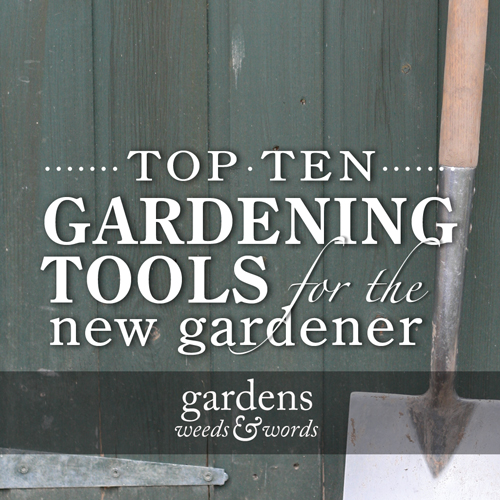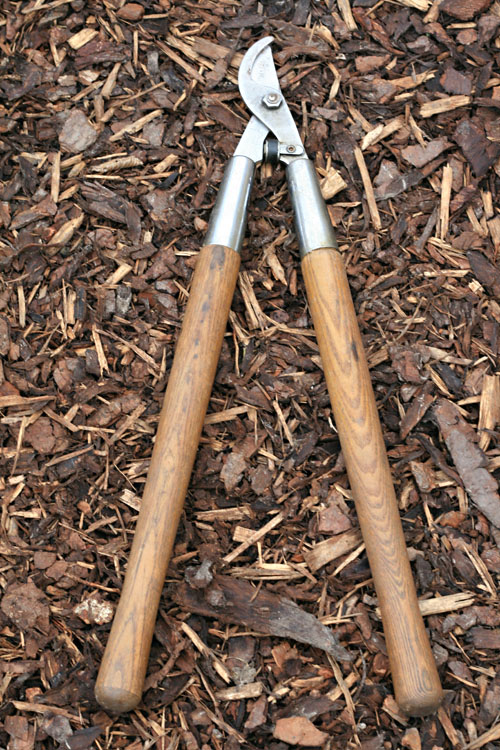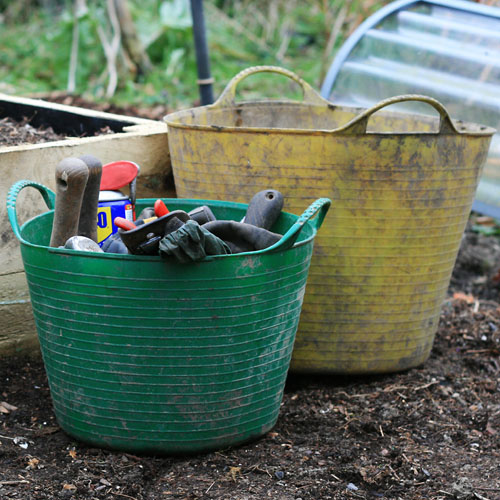To Hassocks this afternoon, keen to see how Ed and Josie are getting on at Garden Sage now the larger plants are in place (you can read about this new nursery in West Sussex here). I’d been impressed with the display on my first visit, but it’s amazing what a difference the addition of the upper story of mature trees and shrubs makes within the polytunnels! There’s been a fair amount of rejigging, Josie told me, as several of the larger specimens have already been sold and delivered to customers – not bad going for a business in its first month.
But I was here for something considerably more modest. With an eye to the coming season, one of my clients had made mention of lupins – something which simultaneously gladdened my heart and caused a feeling of slight despair – the former as I love both the exuberant flower spikes and the tiers of whorled foliage (particularly when accessorised by a drop of dew at the centre of the palmate leaf), and the latter because the garden in question is the very front line of a battle fought with ravening rabbits, excavating badgers and voracious slugs. Still, if we play it safe in such locations we’d have to put up with a garden of euonymus, choysia and the smellier of the hardy geraniums which even the rabbits won’t touch, and one of the reasons I was brought in was to move away from that. Lupins it is then, even if we have to cage them for the first few weeks, and scatter non-metaldehide slug pellets about (coffee grounds have been suggested as an alternative, which is an excellent idea, although I don’t drink enough of the stuff, and have yet to find a friendly cafe that will donate their leftovers. Watch this space, though.).
I bagged a selection consisting of the white 'Noble Maiden', which I’ve grown before, the pink and white 'The Chatelaine', and blue and white 'The Governor' (surely the London cabbie’s favourite plant). They’re all part of the 'Band of Nobles' series of Lupinus x russelli, bred by lupin supremo George Russell in the middle of the last century and possessing the RHS Award of Garden Merit. Nurse them through the early vulnerable stages by keeping the beasties at bay, and you’ll be rewarded with an impressive presence in the border, reaching 90 to 120 cm in height.
Lupins in the 'Band of Nobles' series
The lupins were the reason for my shopping trip. But, of course, I was waylaid but something else, and couldn't avoid taking home with me these beautiful hellebores. Helleborus x sternii - creamy green flowers with a grape red blush to the back of the petals, quite breathtaking in groups, though to be honest these three will probably be split up and integrated into mixed hellebore plantings in different sites, even though it's tempting to keep them for myself!
Helleborus x sternii
And finally, as I was about to leave, Ed thrust this spectacular trillium at me as a ‘thank you’ for helping unload the big Italian plant order a few weeks back. Fair payment indeed. This is Trilium kurabayashi 'Ruby Realm' – a very Ed plant, hailing as it does from Oregon, where Mr Nugent spent part of his horticultural apprenticeship. My biggest concern is keeping the plant slug and snail free while it gains the necessary strength to see of the hungry blighters. I’d best get on to the local coffee houses.
Trillium kurabayashi

























